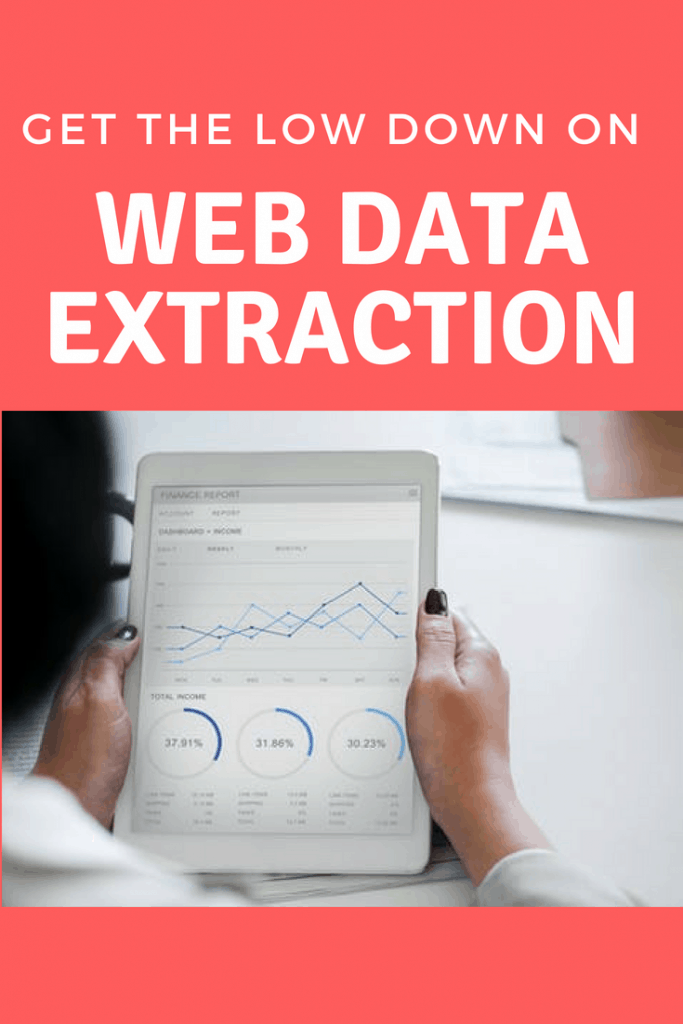Web data extraction has a number of different names. This includes the likes of screen scraping, web harvesting, and web scraping. No matter what name you use, this is a generic term that involves extracting large quantities of data from sites on the Internet. Nowadays, more and more businesses are making the most of the data in order to make more intelligent business decisions. However, you need to extract this data correctly and you need to analyse it effectively if you are to reap maximum rewards. With that being said, read on to discover everything you need to know about web data extraction.
What approaches can you use to web data extraction?
You may use data extraction for market research, competitor analysis, intelligence, or to get more leads from your website. There are then businesses that operate solely based on data. Nevertheless, no matter what applies, there is no denying that extracting large quantities of data presents a big roadblock for a large number of businesses today. This is typically because they are not going down the optimum route. With that in mind, let’s take a look at the different ways you can extract data, as well as the pros and cons associated with each other.
- DaaS – Most people believe that this is the best solution for web data extraction. Outsourcing data extraction to a DaaS provider means that you do not have any responsibilities in terms of quality inspections, maintenance, and crawler set-up. The pros of this option mean you have more time to focus on your core business, and high-quality data is assured due to quality checks. This approach can also handle complicated and dynamic websites, as well as being completely customisable to your requirements. On the negative, it can be expensive and you may have to enter into a long-term contract.
-
- In-house data extraction – If your company is technically rich, this is an option to consider. Otherwise, you should stay away from this approach. The in-house route is ideal for simpler requirements, and it will give you total control and ownership over the process. However, there are a number of drawbacks that do need to be considered. This includes the fact infrastructure is expensive, it could impact the core focus of your business, it may hog business resources, managing, training and hiring a team can be hectic, and maintenance of crawlers can be a headache.
- Vertical specific solutions – This relates to using the services of a data provider that caters to a particular industry vertical. If you can find a provider that does cater to your domain target, this can be a good option to go for. You will benefit from comprehensive data from the industry. Furthermore, there is no need to handle the complex elements of extraction and you will get quicker access to data. On the flip side, data is not exclusive and there is a lack of customisation options.
- DIY data extraction tools – This is the final option to consider. Usually, business owners only turn to this when they do not have the budget for the other options. Advantages include ease of configuration and use, pre-built solutions, and full control. Cons include that the learning curve can be high, fewer customisation options, more noise from the data, and they get outdated regularly.
Some of the best web data extraction practices
Now that you have a better understanding regarding the different approaches you can use when extracting web data, let’s look at some tips to follow to help you along the way…
- Do not hit the servers too frequently
- Respect the robots.txt
- Only scrape during off-peak hours
- Use the scraped data responsibility
Finding reliable data sources
On a final note, if you are crawling other websites for your data, there are a few things you need to keep in mind. Make sure you stay away from any websites that have too many broken links. You also need to make sure the data is fresh and of a high quality, as well as staying away from any websites that have highly dynamic coding practices.
Hopefully, you now have a better understanding regarding web data extraction, including the different approaches you can use and some of the best practices to follow. There is no denying that you can use data to your advantage at any business, but you need to make sure you go about it in the right way to have true success.
*This post has been written for Morning Business Chat by an outside source.




